
Mental Health at School: Connection Matters for Gen Z
Schools are natural hubs for connection. Whether it’s the large community of an entire school or the individual subcommunities that comprise it, schools provide opportunities to forge relationships that can meet a variety of needs.
And this type of connection is more important than ever. National institutions like the CDC and the US Surgeon General’s office have already made public declarations of a mental-health crisis among young people—our data show that the issues are real and ongoing. In 2021, Springtide surveyed more than 4,000 young people for a study on mental health in educational settings. Among the findings in Mental Health & Gen Z: What Educators Need to Know was that many schools go above and beyond to offer a sense of connection and inclusion, but some young people still feel left out.
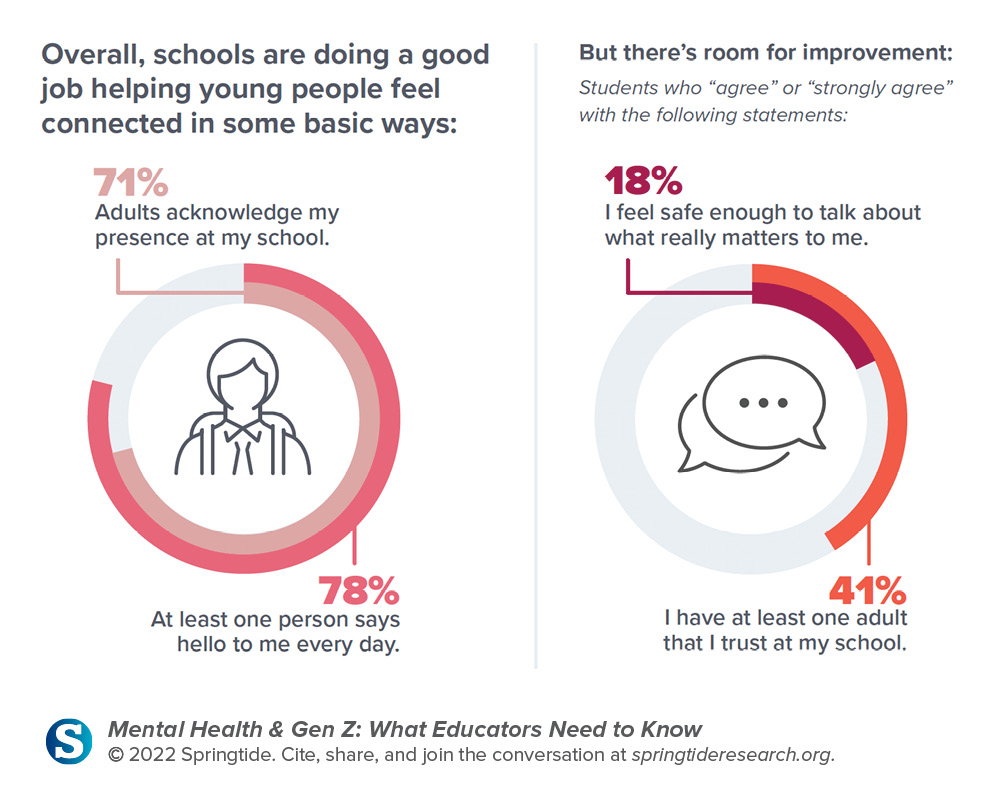
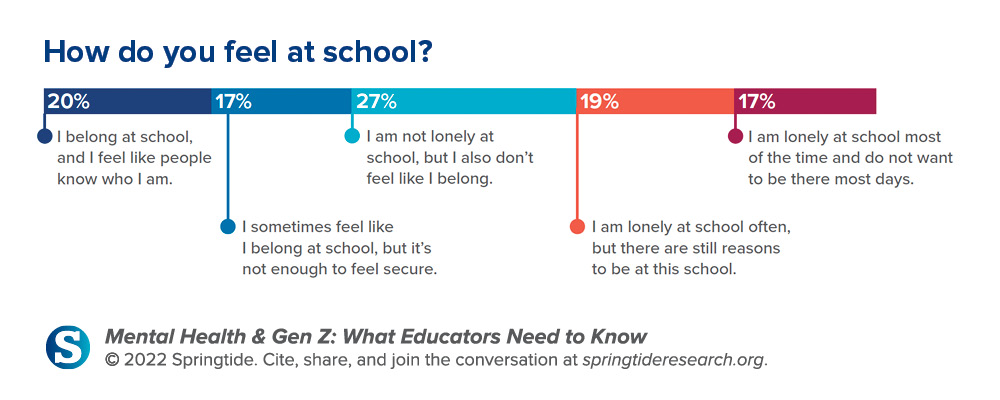
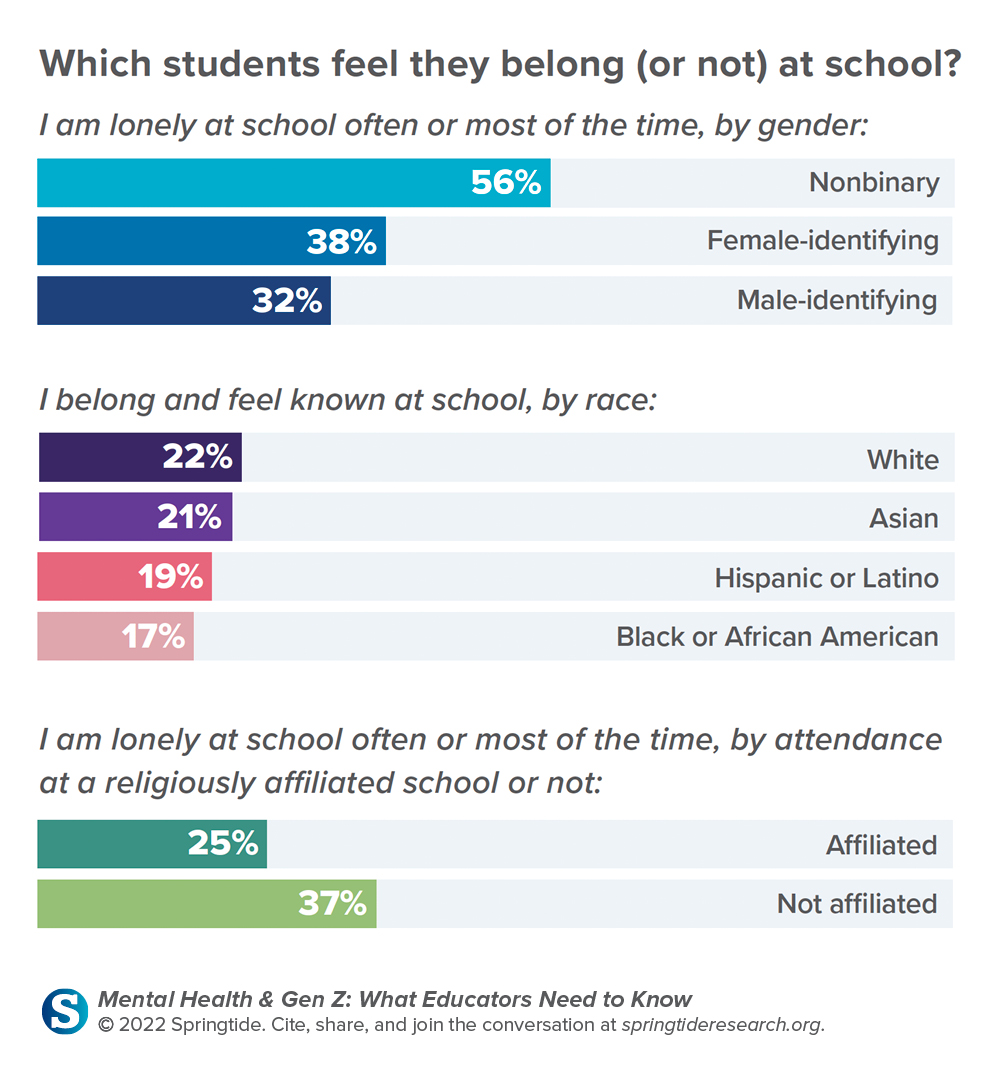
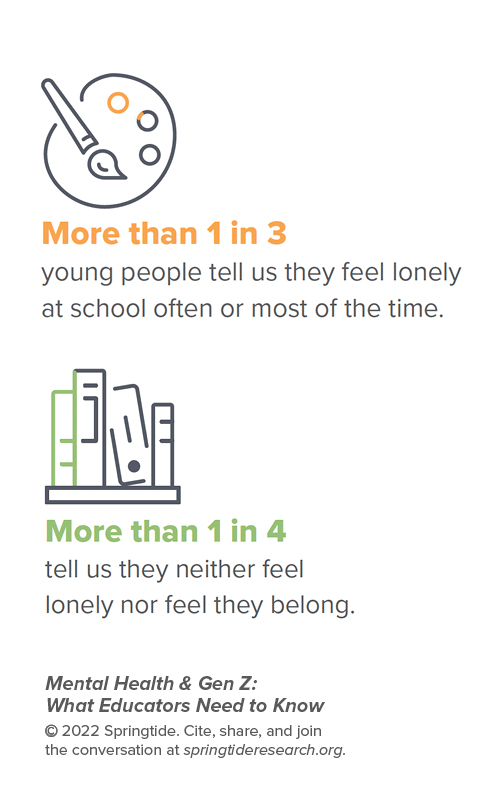
So how can schools continue to support the mental-health needs of young people? On a macro level, they can help foster environments of connection and belonging. Young people (and people in general) are less likely to experience negative mental-health outcomes if they have meaningful connections and feel like they belong in the spaces in their lives—this includes school.
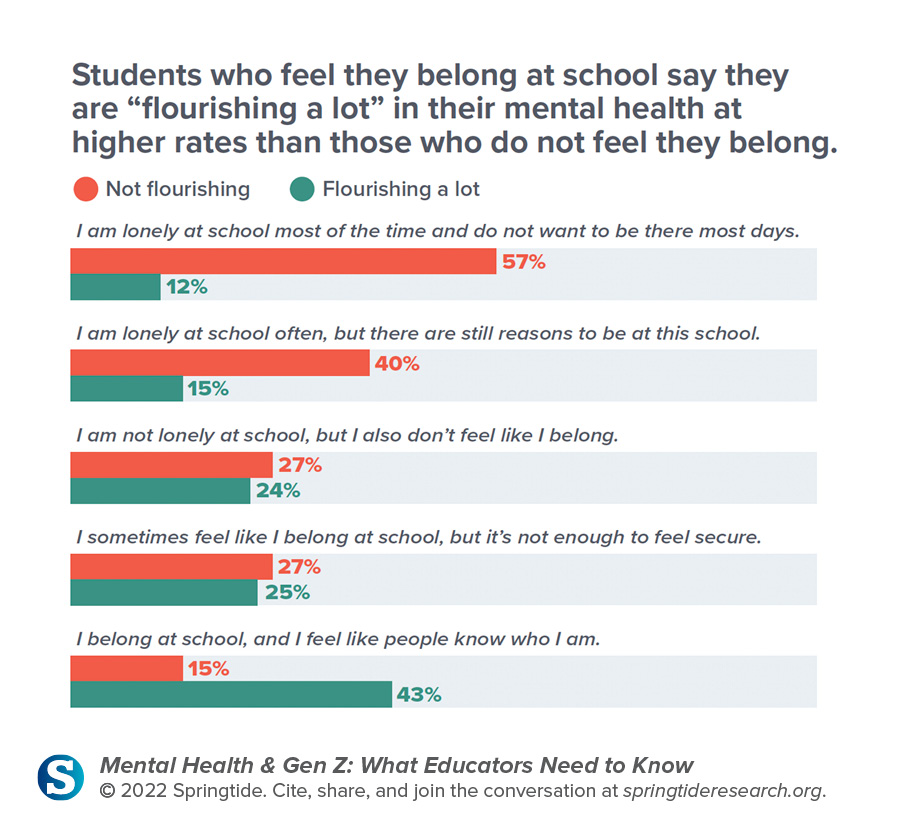
A sense of belonging among peers is important, and a sense of connection with teachers also matters. Cole, 16, said:
“You feel the connection with the teacher; you know, if you really like the teachers and you know they like you back. You just know if it’s comfortable; you know if you’re able to let them know about an issue . . . you can talk about life and about real-world problems and stuff, the kind of things that make you more comfortable with the teacher. They talk about that [kind of deep or real] stuff on top of whatever they have to teach you.”
Our data show that young people who said they have a meaningful interaction with a teacher or professor in a typical week report lower rates of loneliness, compared to those who didn’t have such interactions. Fully 87% of those who did not have a meaningful interaction with a teacher or professor said they are lonely at school most of the time and do not want to be there, compared to only 13% who had a meaningful interaction.
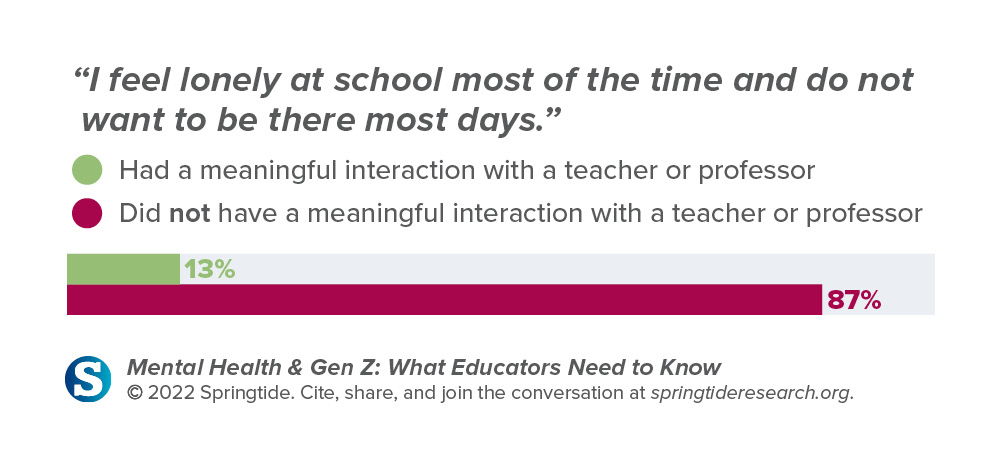
School staff, administration, and faculty can all contribute to creating an environment where students feel like they belong. Springtide’s research uncovered three distinct feelings that come with an increased sense of belonging: feeling noticed, named, and known. This is what we call the Belongingness Process.
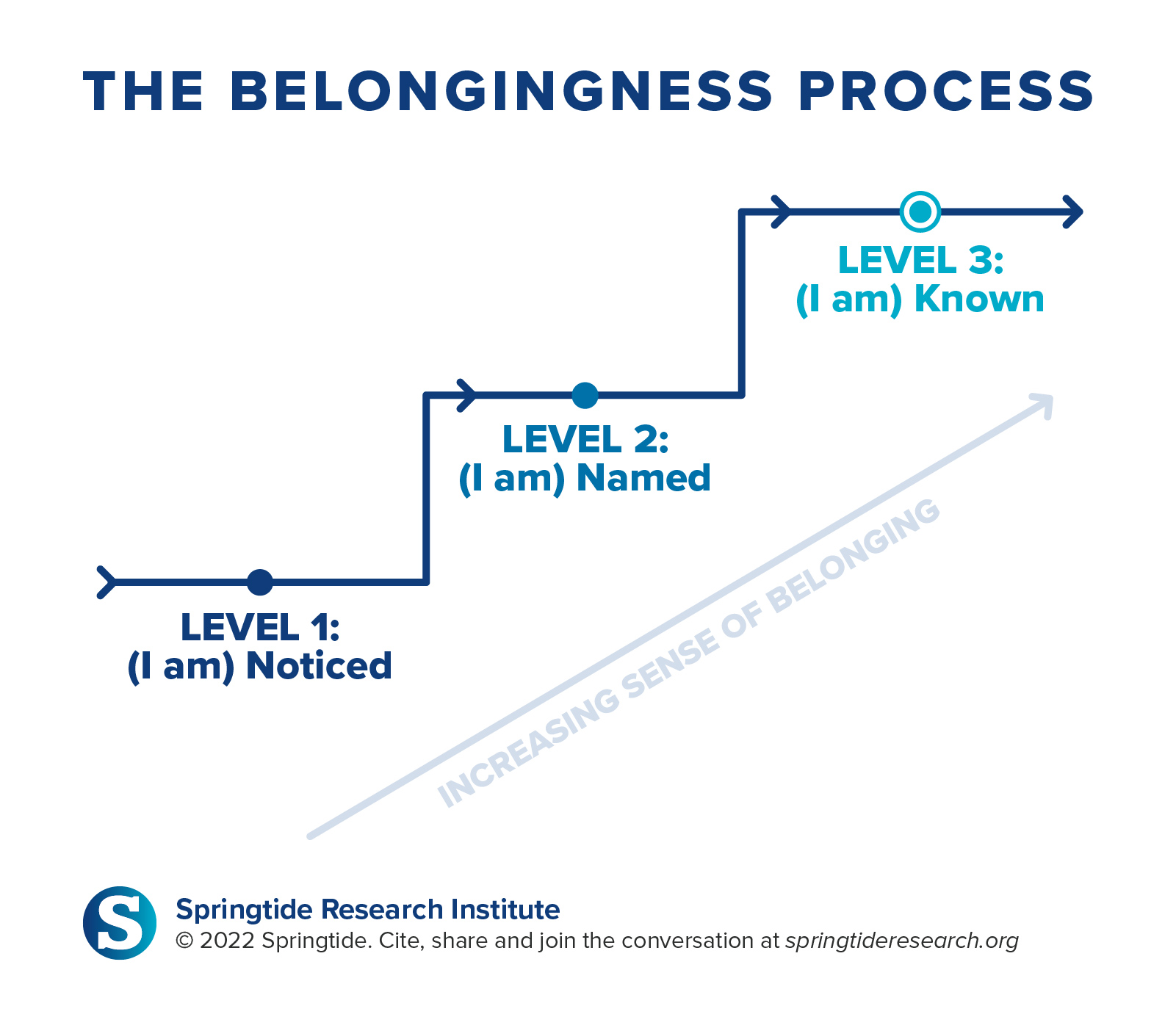
For each step, trusted adults can take obvious actions. Schools often do well with these critical building blocks, but there are always opportunities to create a deeper sense of belonging within each of these steps. To learn more about the Belongingness Process, read the entire report Belonging: Reconnecting America’s Loneliest Generation.



